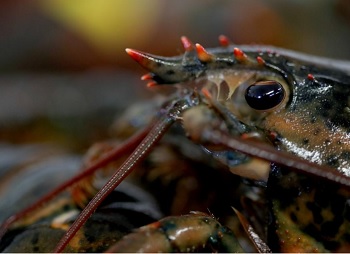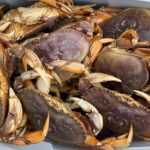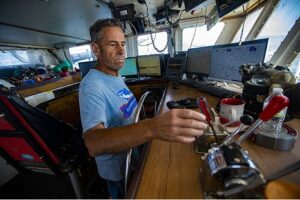Tag Archives: Nova Scotia
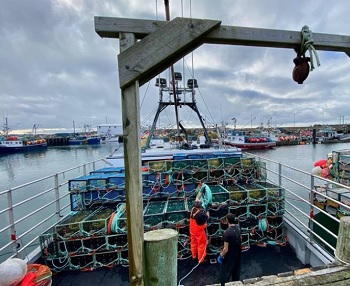
Dec. 3, 09:00 start confirmed for LFA 34 lobster fishery
After days of delay because of the weather, the LFA 34 commercial fishery off southwestern N.S. will get underway Thursday, Dec. 3. It’ll be a later start with boats leaving the wharves at 9 a.m. as opposed to the traditional 6 a.m. start. It was decided to take advantage of daylight for the season start. The season opener was confirmed during a Wednesday morning industry conference call with other stakeholders. >click to read< 14:24
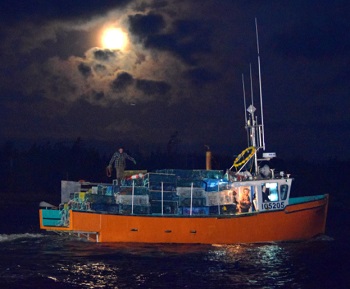
LFA 34 lobster fishery season sees ongoing weather delay – Thursday will be the earliest
It’s another postponement for the start of the LFA commercial lobster fishery off southwestern Nova Scotia. However a marine forecast of increasing winds during the day on Nov. 30, coupled with a gale warning for Tuesday triggered a delay to the start of the season. An industry conference call was held Tuesday morning, Dec. 1, to consider a new start date. Although Environment Canada’s weather forecast for Wednesday calls for reduced winds, the sea states will still be three to four metres so port reps voted ‘no’ to setting gear on Wednesday. photos, >click to read< 14:06
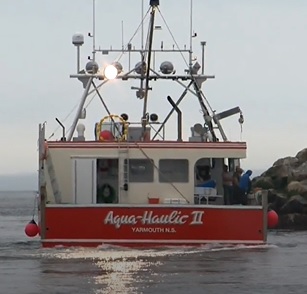 Weather stretches out delay in opening lucrative southwestern N.S. lobster fishery – Lex Brukovskiy, president of the Maritime Fishermen’s Union Local 9, said today that he’s been informed rough waters means Thursday will be the earliest possible opening day in Lobster Fishing Area 34. >Video, click to read<
Weather stretches out delay in opening lucrative southwestern N.S. lobster fishery – Lex Brukovskiy, president of the Maritime Fishermen’s Union Local 9, said today that he’s been informed rough waters means Thursday will be the earliest possible opening day in Lobster Fishing Area 34. >Video, click to read<

RCMP: Two charged following alleged incidents in St. Mary’s Bay during fisheries dispute
The charges were laid under the Vessel Operation Restriction Regulations for unsafe activity in St. Mary’s Bay near Saulnierville. On Nov. 26, the RCMP charged 34-year-old Brandon Alexander Maloney, of Hants County, for unsafe operation of a vessel in relation to an incident that took place Sept. 20 in St. Mary’s Bay. Maloney was a fisheries manager for Sipekne’katik at the time of the alleged incident. He has since been elected to council and no longer holds that manager position. Also charged is 26-year-old Shaquest India Miller of Yarmouth County, for unsafe operation of a vessel, relating to an Oct. 12 incident, in St. Mary’s Bay. Both are scheduled to appear in Digby Provincial Court on Feb. 15. >click to read< 17:23

Systemic racism: another view
A recent column by Dr. Jim Guy on the lobster fishery question (“Systemic racism plagues Nova Scotia’s fishery,”) is most thought provoking. Dr. Guy posits that at the core of this dispute lies systemic racism, luridly comparing the situation to the segregationist Jim Crow south of America’s past. I do not agree with his position, instead seeing the dispute as one between fishers contesting jurisdictional licensing and conservation issues and not one of race, much less one of systemic racism, where the very administrative arms of society are imposing racially biased polices against Indigenous fishers. By David Delaney, >click to read< 12:35
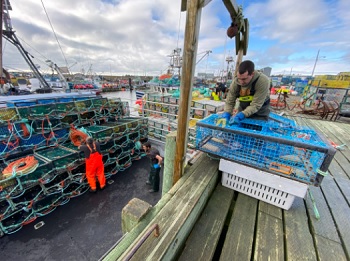
LFA 33 to open, Monday a no-go for LFA 34: weather forecast leads to split start of commercial lobster season
The fishery in Lobster Fishing Area (LFA) 33, which runs along the province’s south shore will open as scheduled on Monday, with boats leaving at 7 a.m. But that’s not the case for LFA 34 off southwestern Nova Scotia, which, following days of fine weather over the weekend, won’t see boats heading out for dumping day on the traditional last Monday of November. With boats loaded with traps and gear for the start of the season, two industry and stakeholder conference calls held over the weekend,,, “The lobster fishery is vital to our region and our province, and there is a very real anxiety among our community members that this important economic driver is in jeopardy, >click to read< 15:30

Sipekne’katik First Nation receives proposed moderate livelihood fishery memorandum of understanding from feds
Federal Fisheries Minister Bernadette Jordan has sent a proposed memorandum of understanding to the Sipekne’katik First Nation regarding its moderate livelihood fishery. The band says the draft MOU is being reviewed by its lawyers before it will be shared with the public. The only detail made available so far is that it includes an acknowledgement of the band’s right to sell its catch. “This agreement has the potential to be a historic recognition of our treaty rights,,, Sipekne’katik Chief Michael Sack said in a news release Sunday morning. >click to read< 10:29

‘Bad things can happen on nice days’: Lobster season safety takeaways
Neil LeBlanc still remembers the moment he and a crew member made eye contact after the man had been pulled overboard from their lobster vessel. A rope was clenched in the man’s hand. “I remember him looking right at me. As soon as we made eye contact, he was gone.” LeBlanc knows from experience how fast you can disappear from the deck of a vessel.,, But that calm April day in 2016, LeBlanc says, also shows how things can go wrong at any time. As soon as their crew member Wayne Jacquard had gone overboard that day, as soon as their eye contact had been made, LeBlanc was turning the boat around to retrieve their man. Helping him onboard with the rescue was crew member Alderic DeViller, known to his friends as Beef (his nickname). >click to read< 10:30
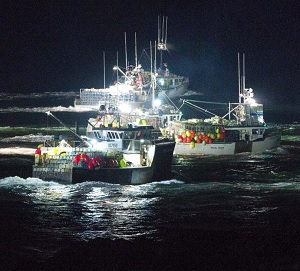
Past lobster season openers starts and misses in southwestern Nova Scotia
There are years the opening of the lobster fishery off southwestern Nova Scotia goes off without a hitch, but not always. The season is always slated to start on the last Monday of November, but sometimes the weather says otherwise. The opening day, when fishermen head to sea to set their traps, is known as dumping day. After traps have been set, boats can start hauling their catches at one minute after midnight, when day two gets underway. Here’s a look at some past season openers. 2015: Good start, good price – The lobster season got off to a good start with decent opening day weather and better yet, a better price than in previous years. Fishermen were being paid around $6 a pound for their landings. photos, >click to read< 07:49

Replenishment, or Misguided Retribution?! Trouble brewing ahead of start to Nova Scotia fall lobster season
The recent seizure of lobster traps in St. Marys Bay by federal officials could lead to big trouble on the water. Chief Mike Sack of the Sipekne’katik First Nation says Indigenous fishers whose traps were taken last weekend and on Wednesday will replace them by taking the traps of commercial fishers when the fall season opens Monday in southwestern Nova Scotia, a huge event known as Dumping Day. “Dumping Day is going to be about 400,000 traps that our people get to pick from to replenish our traps,” Sack said in an interview, referring to the start of Canada’s largest and most lucrative lobster fishery. >video, click to read< 08:02
 Tension could rise again on Monday in lobster dispute on east coast – The ongoing dispute between Indigenous and non-native lobster fishers could get tense once again. Last weekend, and on Wednesday, agents from Fisheries and Oceans Canada (DFO) seized hundreds of Indigenous lobster traps, ostensibly because the traps were set before the season opens on Monday.. >click to read<
Tension could rise again on Monday in lobster dispute on east coast – The ongoing dispute between Indigenous and non-native lobster fishers could get tense once again. Last weekend, and on Wednesday, agents from Fisheries and Oceans Canada (DFO) seized hundreds of Indigenous lobster traps, ostensibly because the traps were set before the season opens on Monday.. >click to read<
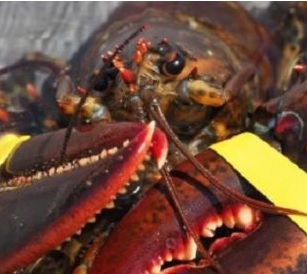
DFO officers seize 500 lobster traps in St. Marys Bay
The Department of Fisheries and Oceans says enforcement officers are going back to St. Marys Bay in southwestern Nova Scotia where they seized hundreds of lobster traps on the weekend in an area used by Mi’kmaw fishermen. Todd Somerville, DFO’s director of conservation and protection for the Maritimes, said 500 traps were seized for a variety of violations. “Untagged gear, improperly configured gear, gear that hadn’t been tended in a while. There was gear where dead lobsters were found. Over 6,000 lobsters, live lobsters, were returned,,, >click to read< 18:17

Sipekne’katik says their livelihood fishery has brought in 100,000 pounds of lobster
Sipekne’katik First Nation said Wednesday they have caught just under 100,000 pounds of lobster since the fishery launched Sept.17, according to their compliance officers. That’s about 45 metric tonnes. “The amount of lobster we took out so far is equivalent to one [commercial] licence,” said Chief Mike Sack. He said the suggestion there has been any over-fishing through the Mi’kmaw treaty fishery is not only inaccurate, but it is fueling discussions that will lead to added marginalization and conflict against the Mi’kmaq. Commercial fishermen have objected to the fishery on conservation grounds, since it is outside the regular lobster season. >click to read< 14:53

‘Reconciliation in Canada’: The Clearwater deal marks Indigenous nations’ growing clout
Chief Terry Paul, of Membertou First Nation in Nova Scotia, who is leading the Mi’kmaq coalition, described it as a “transformational opportunity for the Mi’kmaq to become significant participants in the commercial fishery,” and praised Clearwater’s management expertise, infrastructure and global presence. A spokeswoman for Clearwater said the new owners have no plans to make any operational changes other than taking the company private. The deal is a major leap for Paul’s Membertou Nation, which posted $67 million in revenue in 2019, with a diversified revenue stream from fishing, the Membertou Trade & Convention Centre on Cape Breton Island and a number of other businesses. >click to read< 10:50

RCPM say a 74-year-old man faces assault charges in violent clash at Nova Scotia lobster pound
The RCMP says Yvon Thibault, of Digby County, faces two counts of assault stemming from an incident in New Edinburgh, N.S., on Oct. 14. A pound that stored Indigenous-caught lobster was ransacked as part of two clashes that police have said involved roughly 200 people at wharves in New Edinburgh and in Middle West Pubnico, N.S. Another man was arrested last month for allegedly assaulting Sipekne’katik Chief Mike Sack, also on Oct. 14., but RCMP Sgt. Andrew Joyce says there were two other assault victims that day and Thibault is not accused of assaulting Sack. >click to read< 13:21
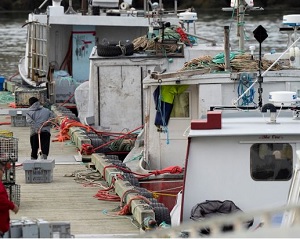
In Nova Scotia, we seem to have forgotten that fishermen are all in the same boat
What a strange province I live in. The top commodity export in Nova Scotia is lobster, part of an industry that has employed tens of thousands of Maritimers, fueled more than 9,000 small businesses and driven $2.2-billion to the East Coast economy, as of 2016. And yet no one outside the industry seems to know a thing about how it works. What a peculiar view Canadians seem to have of us now amid the conflict with Mi’kmaq fishermen over lobster fisheries in Nova Scotia,,, By Susan Beaton >click to read<13:46
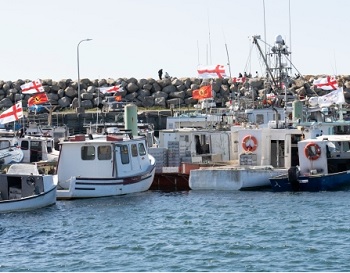
N.S. Mi’kmaq chiefs demand stop of alleged federal plans to seize lobster traps
A group of Nova Scotia Indigenous leaders has levelled harassment allegations at the federal government over an ongoing moderate livelihood fishery dispute,,, The Assembly of Nova Scotia Mi’kmaq Chiefs issued a statement on Friday saying they’d learned of unspecified plans from the conservation and protection department of Fisheries and Oceans Canada, but did not disclose the source of their information. The chiefs alleged department members may be planning to seize gear and traps belonging to fishers exercising what they describe as a protected right to earn a moderate livelihood from their efforts. >click to read< 10:23

Envelope pushed in St. Marys Bay and Digby folk pushed into a corner – Susan Beaton
So now that the dust is starting to settle, righteous keyboard warriors can take a breather. So let’s try to give the people of Digby County and St. Marys Bay some consideration. Terrible things were said and done this month to the Sipekne’katik First Nation people and to those who supported them. No apologies here for the bad behaviour. But consider for a moment what it’s like for a small village, its lifeblood on the line, as a fight for treaty rights plays out on its doorstep. Sipekne’katik wanted to push to the forefront the “moderate livelihood” debate, as many bands in other areas are doing as well. This tiny bay became a focus of that effort. What happened next is a bit more dubious. By Susan Beaton, >click to read< 09:23
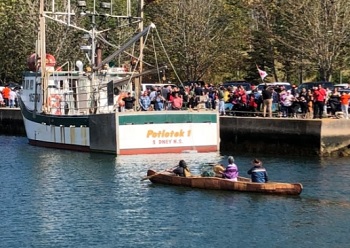
Potlotek moderate livelihood lobster fishery is peaceful, but tensions aren’t far from surface
Potlotek First Nation launched the fishery under its own management plan in St. Peters Bay on Oct 1. Local non-Indigenous fishers have not interfered, but that doesn’t mean they support it. “Commercial fishermen and Aboriginal fishermen have worked side by side, and co-operatively,” he said. “That’s breaking apart right now.” For their part, the Mi’kmaq say they are tired of waiting for the Department of Fisheries and Oceans to work with them to define what constitutes a moderate livelihood. >click to read< 08:32

Sipekne’katik backs out of commercial lobster season citing fears over safety
The decision followed an emergency meeting Friday with fishermen working in the band’s commercial fishery. “The consensus is that they don’t want to fish in the upcoming season due to concerns of safety. There is also the concern of not being able to sell our lobster,” said Chief Mike Sack. “As of right now, our people aren’t comfortable taking that big risk and especially risking their life for that.”Sipekne’katik’s decision means band members won’t fish the nine lobster licences Sipekne’katik holds in Lobster Fishing Area 34 when the season opens next month. >click to read< 21:02
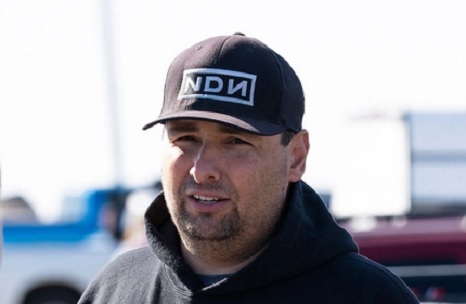
Chief Mike Sack: The face and voice of Mi’kmaq lobster fishing that is met with ire and violence
Monday is election day, when the Sipekne’katik band will elect a chief to lead the province’s second-largest Mi’kmaq community for the next two years. Chief Mike Sack is on his way to Digby. In his pickup, skirting along Highway 101, it is two and a half hours of picturesque driving from his band’s reserve in central Nova Scotia to communities on the province’s southwestern coast, where lobsters grow plump and delicious in St. Marys Bay. While he is well-known in his community, most in Canada only recently noticed Sack, through the news and, for a certain demographic, online memes, both heroic and horrific, sparked by alarming events as the lobster dispute turned violent. >click to read< 18:50

RCMP release persons of interest photos and video in Nova Scotia lobster pound arson investigation
Near midnight on Oct. 16 and into the early morning hours of Oct. 17 the Yarmouth County RCMP and numerous fire departments responded to a fire at the pound. The building, which was unoccupied, was destroyed. “The investigation has determined the fire to be suspicious,” reads an Oct. 30 RCMP media release.,, In an initial media release the RCMP distributed on Oct. 17, the police said a man was is in hospital with life threatening injuries believed related to the fire. He had also been referred to as a person of interest. >video, photos, click to read< 14:59
Nova Scotia lobster pound fire called suspicious – man in hospital with life-threatening injuries >click to read<

A new current in the Nova Scotia lobster dispute – Local First Nation says Sipekne’katik did not consult them before launching
The ongoing dispute over Indigenous fishing rights in Nova Scotia has seen a new player emerge to add to the troubled waters. This time however, it might be seen as veiled criticism by one band of the actions of the other.,, The new player in the dispute is the local Bear River Mi’kmaw band who are actually the band closest to St Mary’s Bay in southwestern Nova Scotia. On the other hand, the Sipekne’katik who are at the heart of the dispute, are based over 250 km away in the central part of the province. >click to read< 14:30
Mi’kmaw band raises concerns about Sipekne’katik lobster fishery – In a letter sent to media and addressed to federal Fisheries Minister Bernadette Jordan, Sipekne’katik Chief Mike Sack and other Indigenous leaders, Bear River Chief Carol Dee Potter said her community has fished St. Marys Bay “since time immemorial,” but they’ve recently been disrupted. “Over the last few weeks, our fishers have been forced out of this area due to the ongoing dispute,” >click to read<
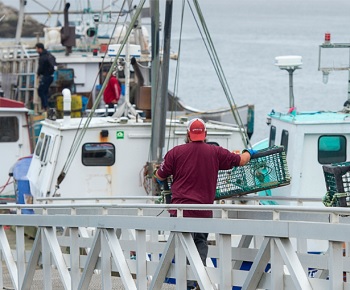
Moving Forward on Lobster Fishery Means Addressing Access and Conservation
In 1999, the Supreme Court’s Marshall decision recognized that Mi’kmaq First Nations have had, and continue to have, a treaty right to catch and sell fish. As a result, First Nations have been increasing their presence in the fishery over the past 20 years. Now, more than 20 years later, this remains a stumbling block, as new “moderate livelihood” Indigenous fisheries are emerging. Further, these new fisheries have another crucial angle – First Nations are developing their own fishery management and conservation plans, making this about Indigenous self-governance as well as about catching lobsters. Indeed, what we’re seeing unfolding off the coast of Nova Scotia touches on two themes that come up worldwide: who sets the rules for conservation of resources, and who has access to harvesting that resource. >click to read< 08:33
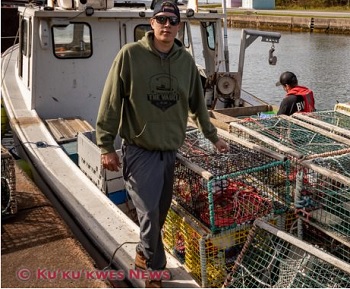
Mi’kmaw lobster fisherman in Nova Scotia says he plans to fight several fishery charges
Ashton Bernard, 30, says he was exercising his treaty right to fish for a moderate livelihood when officers with the Department of Fisheries and Oceans seized approximately 3,200 pounds of his lobster at the wharf in Pickney’s Point near Yarmouth, N.S. in Sept. 2019. “They took all of our lobsters. I don’t even know what they did with it,” Bernard explained. Bernard and his younger brother, Arden, were charged. Two other fishermen, Zachary Nicholas and Rayen Francis from Pictou Landing First Nation, were also charged. >click to read< 10:02
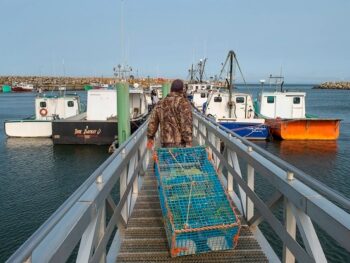
Lorne Gunter: Here’s the real back-story to the Maritimes lobster dispute
A 1999 Supreme Court decision, the Marshall decision, affirmed a supposed ancient treaty right to hunt and fish out of season. The only limitation the court placed on this apparently pre-existing right was that First Nations could earn only a “moderate livelihood” with their out-of-season activities. The problem now, we are told over and over, is the failure of the federal government over the intervening 20 years to negotiate a fisheries management framework that defines, limits and regulates “moderate livelihood.” Twenty-one years ago, I covered the Marshall case,,, The Marshall decision was an example of judicial bias and pre-conceived judgement. >click to read< 07:55
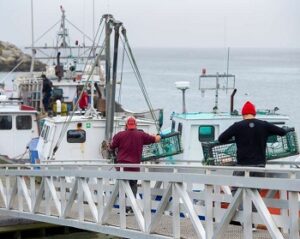
Ottawa appoints special mediator in N.S. Indigenous lobster fisheries dispute
In a statement released late Friday, the government said former Nova Scotia MLA and cabinet minister Allister Surette will “communicate with and rebuild trust” between both sides in the weeks-long dispute that has turned violent in recent days. Surette was appointed by Fisheries and Oceans Minister Bernadette Jordan and Crown-Indigenous Relations Minister Carolyn Bennett, who have both voiced Ottawa’s support for the Mi’kmaq fishers and the 1999 Marshal decision that their fishery is based on. “A peaceful resolution is achievable, and (Surette’s appointment) will strengthen our fisheries and our communities,” she added. >click to read< 09:41 From: Fisheries and Oceans Canada – Biograghy, Allister Surette, >click to read<
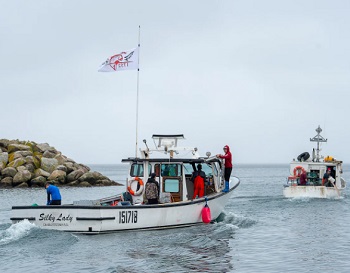
For Acadian fisherman, early Mi’kmaq fishery in N.S. bay can ‘never’ be respected
As he stands calmly splicing anchor rope, Roger LeBlanc describes the anxiety, anger and suspicion over a Mi’kmaq lobster fishery that is coursing through his small Acadian community. The threat perceived by LeBlanc, 61, is the launch of a lobster fishery by Sipekne’katik First Nation in September,,, In the weeks that followed, Indigenous traps were cut, a boat burned, vehicles were destroyed, and one lobster pound that handles Indigenous catch was damaged while another was burned down. The actions by groups of up to 200 people have drawn condemnation from across party lines in Parliament. >click to read< 13:40
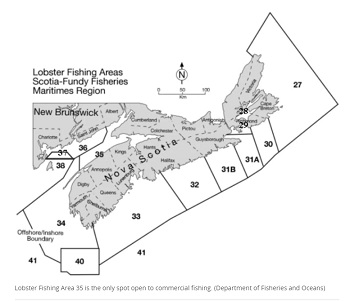
Company willing to buy Sipekne’katik lobster from open fishing area 35
Bruce Gidney of Gidney Fisheries in Digby made the offer in response to Chief Mike Sack of Sipekne’katik, who has said buyers and suppliers won’t do business with the band amid ongoing tensions between Mi’kmaw and non-Indigenous commercial fishers. “The chief said no one was interested,” said Gidney. “We weren’t contacted and neither were other buyers I’ve talked to.” The Sipekne’katik band is sitting on 6,800 kilograms of lobster harvested by members under three commercial licences it holds in Lobster Fishing Area 35, or LFA 35. The commercial season opened there last week. It is the only area currently open to commercial fishing. >click to read< 08:45
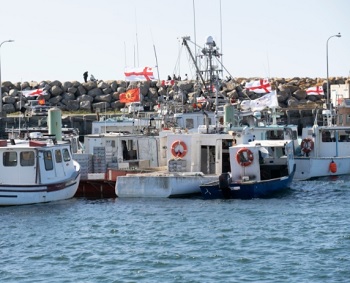
Sipekne’katik seek injunction from Nova Scotia Supreme Court to end threats, interference in lobster fishery
The Sipekne’katik band is seeking a temporary court injunction to end blockades, interference and threats over its lobster fishing in southwest Nova Scotia. The band applied to Nova Scotia Supreme Court Wednesday for an injunction to prohibit anyone from trying to stop members from accessing two wharves in the region, in Saulnierville and Weymouth, and a lobster pound it uses in New Edinburgh. The band also seeks to end interference at sea, where it says traps have been damaged, destroyed or taken by non-Indigenous fishermen. >click to read< 14:01






